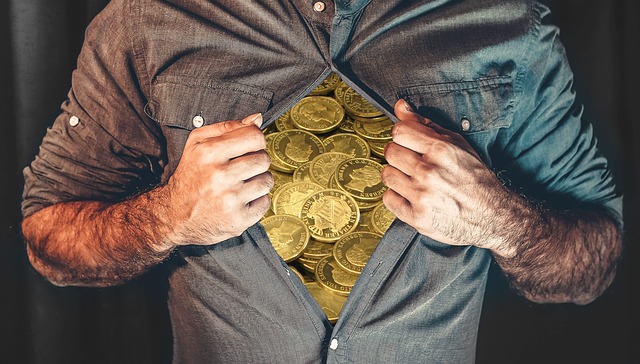Category: Choosing the Right Lender
Choosing the Right Lender: A Comprehensive Guide
Introduction
In today’s complex financial landscape, selecting the appropriate lender is a pivotal decision that can shape an individual’s or business’s economic trajectory. This article delves into the intricate process of choosing the right lender, exploring various facets and considerations to ensure informed choices. We aim to provide readers with a comprehensive understanding of this critical aspect of financial management, empowering them to navigate the lending market effectively.
The act of choosing a lender involves more than just securing a loan; it entails evaluating a multitude of factors, understanding one’s financial needs, and aligning them with the capabilities and offerings of potential lenders. As borrowing options expand, from traditional banks to online lenders, consumers must be adept at discerning the best fit for their unique circumstances.
Understanding Choosing the Right Lender
Definition and Core Components
“Choosing the Right Lender” refers to the process of identifying and selecting a financial institution or lending entity that offers the most suitable loan products and services for an individual’s or business’s requirements. This involves a thorough evaluation of various aspects, including interest rates, loan terms, fees, collateral requirements, and lender reputation.
The core components of this decision-making process include:
-
Financial Assessment: Understanding one’s creditworthiness, income, expenses, and financial goals is fundamental. Lenders evaluate these factors to determine loan eligibility and offer tailored products.
-
Loan Purpose: Whether it’s for purchasing a home, funding education, starting a business, or consolidating debt, the intended use of the loan influences lender selection. Different lenders specialize in specific loan types.
-
Interest Rates and Fees: This is a critical factor as it impacts the overall cost of borrowing. Consumers should compare interest rates, annual percentage rates (APRs), and any associated fees to find the most cost-effective option.
-
Loan Terms and Conditions: Lenders offer varying loan terms, including repayment periods, minimum payments, and prepayment penalties. Understanding these terms ensures borrowers know their financial obligations.
-
Lender Reputation and Trustworthiness: Researching the lender’s history, customer reviews, and regulatory compliance is essential to avoid potential scams or unreliable institutions.
Historical Context and Significance
The practice of choosing the right lender has evolved significantly over time, driven by technological advancements, globalization, and changing economic landscapes. Historically, lending was predominantly dominated by traditional banks, with limited options for borrowers. However, the digital revolution introduced online lenders, peer-to-peer (P2P) borrowing platforms, and specialized financial institutions, expanding access and competition in the market.
This shift has empowered consumers to compare rates, terms, and services more effectively. With a vast array of choices, individuals can now tailor their lending experience to specific needs, whether seeking personal loans, mortgages, business financing, or specialized credit products. The significance of this process lies in its ability to:
-
Ensure Financial Fitness: Making informed lending decisions helps individuals maintain healthy financial balances by avoiding excessive debt and costly borrowing.
-
Unlock Opportunities: Secure access to capital enables businesses to expand, innovate, and seize market opportunities, contributing to economic growth.
-
Promote Transparency: A robust lending landscape encourages transparency in terms and conditions, fostering trust between lenders and borrowers.
Global Impact and Trends
The concept of “Choosing the Right Lender” has a profound global impact, with varying trends and influences across regions:
-
North America and Europe: These regions have long been at the forefront of lending innovation, witnessing a surge in digital banking and online lending platforms. Traditional banks continue to dominate, but alternative lenders are gaining traction, especially for niche loan segments. Regulatory bodies like the CFPB (Consumer Financial Protection Bureau) in the US and various European central banks play pivotal roles in shaping lending practices and consumer protection.
-
Asia Pacific: Rapid economic growth in countries like China and India has led to a robust lending market. Mobile banking and digital payment systems are widely adopted, driving the emergence of online lenders and fintech startups. Regulatory authorities in these regions are focusing on enhancing financial inclusion while maintaining stability.
-
Emerging Markets: In many developing countries, access to formal credit remains a challenge. However, mobile money services and P2P lending platforms are gaining popularity, providing alternative financing options. Government initiatives aimed at financial literacy and inclusive growth contribute to shaping lending trends in these regions.
Economic Considerations
Market Dynamics and Investment Patterns
The global lending market is a dynamic sector influenced by various economic factors:
-
Interest Rate Fluctuations: Central banks’ monetary policies significantly impact interest rates, affecting borrowing costs for individuals and businesses. During periods of low-interest rates, loan demand tends to increase, while higher rates may discourage borrowing.
-
Economic Growth and Recessions: Lending activity is closely tied to economic health. In prosperous times, lending volumes surge as businesses invest and consumers spend. Conversely, during recessions, lenders may become more cautious, leading to tighter lending standards.
-
Investment Trends: The investment landscape influences lending practices. For instance, the rise of sustainable and impact investing has led some lenders to offer environmentally and socially responsible loan products, catering to conscious consumers.
Impact on Borrowers and Lenders
Economic considerations shape both borrowers’ and lenders’ strategies:
-
Borrowers: Individuals and businesses carefully monitor economic indicators to time their borrowing needs. During economic downturns, they may seek more favorable terms or explore alternative financing sources.
-
Lenders: Financial institutions adapt to market dynamics by adjusting loan offerings, interest rates, and risk assessment models. They also invest in technology to enhance customer experience and improve operational efficiency.
Exploring Different Types of Lenders
Understanding the lending landscape involves acquainted with various types of lenders:
-
Traditional Banks: Established financial institutions offering a wide range of services, including loans, deposits, and investment products. They typically have robust branch networks and experienced staff but may have less flexible loan terms for certain segments.
-
Online Lenders: Digital platforms that provide quick loan approvals and funding through streamlined processes. These lenders often focus on specific loan types, such as personal or student loans, and may offer competitive rates but limited customer service options.
-
Peer-to-Peer (P2P) Lending Platforms: Online marketplaces connecting borrowers directly with individual investors or other lenders. P2P lending offers flexible terms and potentially lower interest rates but carries credit risk as there’s no intermediary guarantee.
-
Credit Unions: Non-profit, member-owned financial cooperatives that provide a range of services, including loans, at competitive rates. Credit unions often prioritize their members’ interests and community development.
-
Specialized Lenders: These institutions cater to specific industries or loan types, such as equipment financing, real estate lending, or agricultural loans, providing tailored solutions for specialized borrowers.
Key Factors to Consider When Choosing a Lender
1. Creditworthiness and Repayment Capacity
Evaluating your credit history and score is crucial when applying for a loan. Lenders assess your repayment capacity based on factors like:
-
Income: Lenders verify your income to ensure it supports loan repayments.
-
Employment Stability: A stable job or employment history enhances borrowing potential.
-
Debt-to-Income Ratio (DTI): This ratio compares your total debt payments to your income, indicating repayment ability. Lenders typically prefer a DTI below 30%.
2. Interest Rates and Fees
Comparing interest rates is essential to finding the most cost-effective loan option:
-
Fixed vs. Variable Rates: Fixed rates remain constant throughout the loan term, providing predictability. Variable rates fluctuate based on market conditions, potentially offering lower initial rates but carrying the risk of increases later.
-
APRs (Annual Percentage Rates): APRs consider not only interest rates but also fees and other costs associated with the loan, providing a comprehensive view of borrowing expenses.
-
Fees: Lenders charge various fees, including origination, processing, and prepayment penalties. Understanding these fees helps in budgeting for additional costs.
3. Loan Terms and Conditions
The terms of your loan will impact your financial obligations:
-
Repayment Period: Loans with shorter terms generally have higher monthly payments but may save on interest over time. Longer terms result in lower monthly payments but accrue more interest.
-
Minimum Payments: Lenders set minimum payment thresholds, and missing these can lead to penalties. Understanding these requirements ensures timely repayments.
-
Prepayment Penalties: Some lenders charge fees for paying off loans early, so reviewing these terms is essential when considering loan repayment strategies.
4. Lender Reputation and Customer Service
Researching the lender’s reputation and customer feedback is vital:
-
Online Reviews: Websites like Google Reviews, Trustpilot, or specialized financial review platforms offer insights into lenders’ services, including their responsiveness, transparency, and problem-solving abilities.
-
Regulatory Compliance: Check if the lender is licensed and regulated by relevant authorities to ensure compliance with consumer protection laws.
-
Customer Support: Effective customer service is crucial during the loan application process and beyond. Consider the availability, accessibility, and quality of their support channels.
Additional Tips for Informed Lending Decisions
-
Compare Multiple Offers: Don’t settle for the first offer. Compare rates, terms, and fees from several lenders to make an informed choice.
-
Negotiate: In some cases, especially with larger loan amounts, you may negotiate interest rates or fees directly with the lender.
-
Understand Loan Origination Fees: These fees are typically a percentage of the loan amount and should be clearly disclosed by the lender.
-
Read the Fine Print: Carefully review all loan documents, including terms, conditions, and potential penalties, to avoid surprises later.
-
Consider Alternative Financing: Explore alternatives like crowdfunding, business loans from government agencies, or equipment leasing for specialized needs.
Conclusion
Choosing a lender is a crucial step in securing financing for your goals. By understanding the various types of lenders, evaluating key factors, and comparing options, you can make an informed decision that aligns with your financial needs and long-term objectives. Remember, a responsible lending choice not only ensures access to funds but also contributes to building a healthy financial future.









